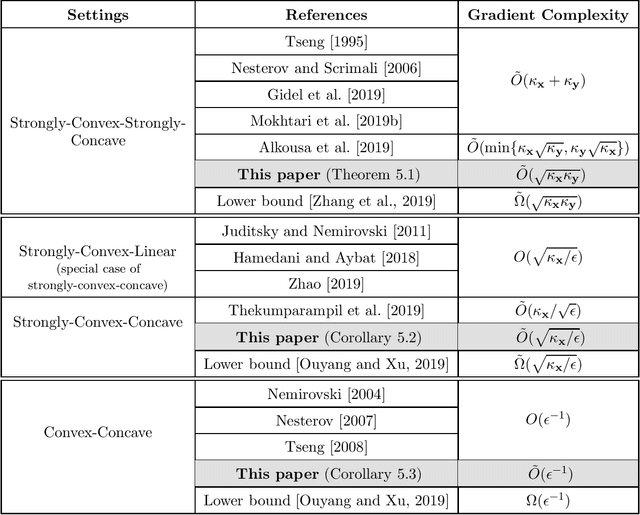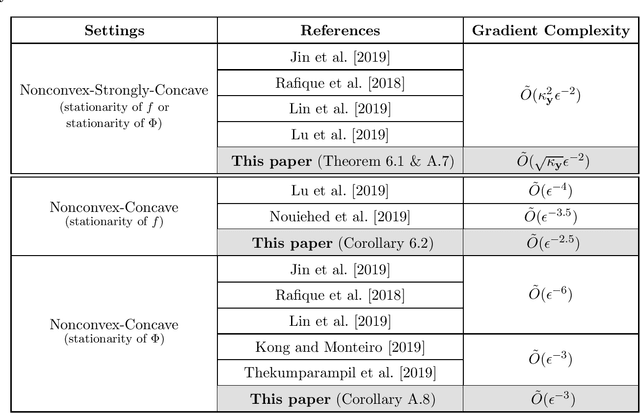Near-Optimal Algorithms for Minimax Optimization
Paper and Code
Feb 05, 2020

This paper resolves a longstanding open question pertaining to the design of near-optimal first-order algorithms for smooth and strongly-convex-strongly-concave minimax problems. Current state-of-the-art first-order algorithms find an approximate Nash equilibrium using $\tilde{O}(\kappa_{\mathbf x}+\kappa_{\mathbf y})$ or $\tilde{O}(\min\{\kappa_{\mathbf x}\sqrt{\kappa_{\mathbf y}}, \sqrt{\kappa_{\mathbf x}}\kappa_{\mathbf y}\})$ gradient evaluations, where $\kappa_{\mathbf x}$ and $\kappa_{\mathbf y}$ are the condition numbers for the strong-convexity and strong-concavity assumptions. A gap remains between these results and the best existing lower bound $\tilde{\Omega}(\sqrt{\kappa_{\mathbf x}\kappa_{\mathbf y}})$. This paper presents the first algorithm with $\tilde{O}(\sqrt{\kappa_{\mathbf x}\kappa_{\mathbf y}})$ gradient complexity, matching the lower bound up to logarithmic factors. Our new algorithm is designed based on an accelerated proximal point method and an accelerated solver for minimax proximal steps. It can be easily extended to the settings of strongly-convex-concave, convex-concave, nonconvex-strongly-concave, and nonconvex-concave functions. This paper also presents algorithms that match or outperform all existing methods in these settings in terms of gradient complexity, up to logarithmic factors.
 Add to Chrome
Add to Chrome Add to Firefox
Add to Firefox Add to Edge
Add to Edge